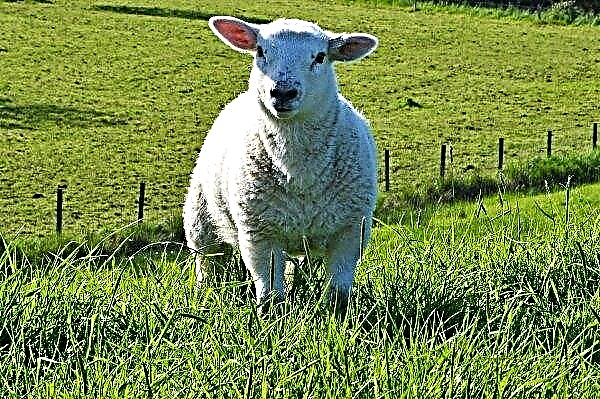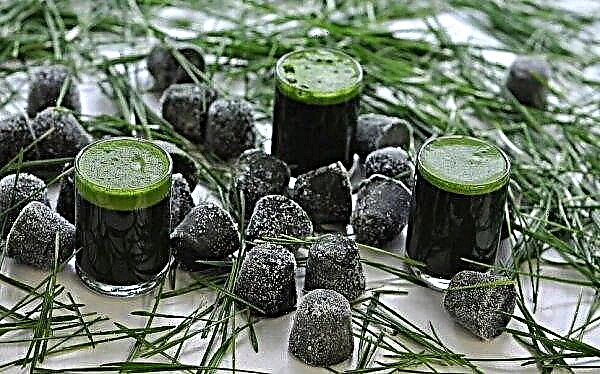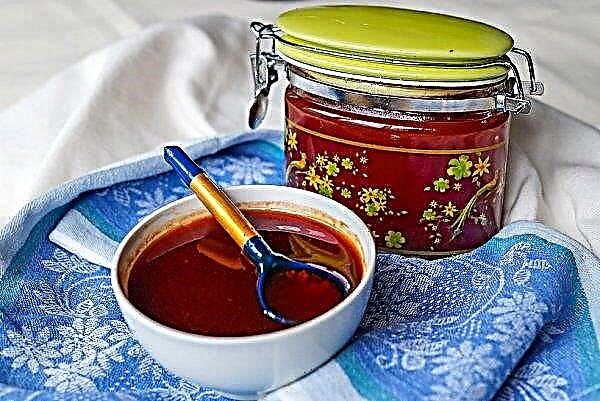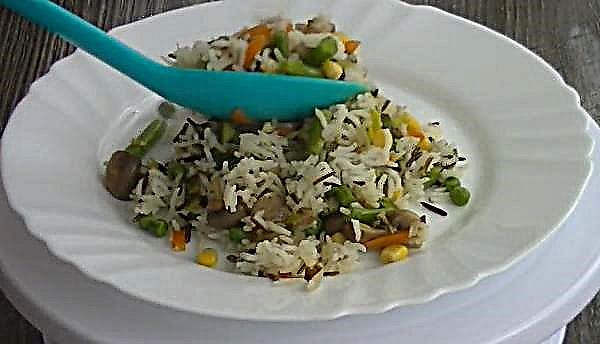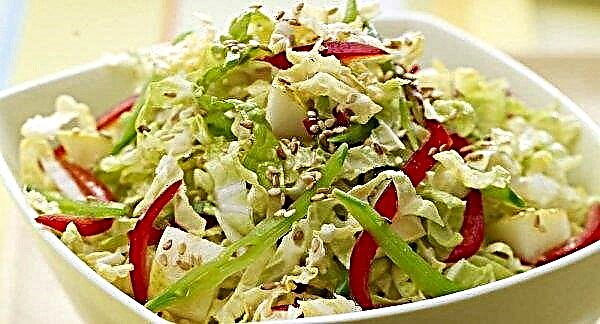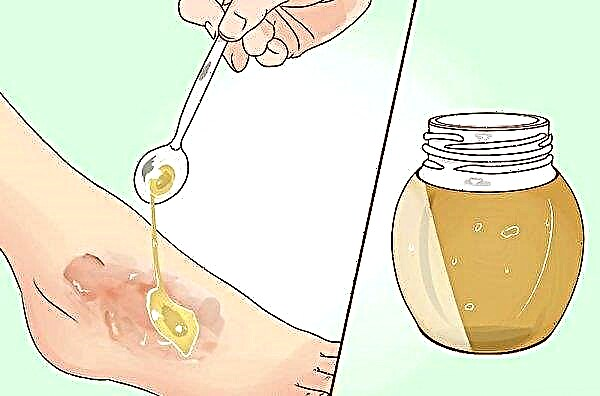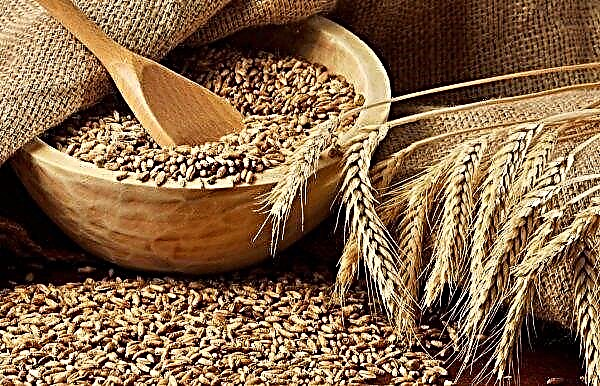When choosing a tomato variety, many gardeners are wary of hybrid varieties, and often this is justified - despite many advantages, hybrids often have a "plastic" taste. But the tomato variety Nadezhda is a happy exception to the rule - with high yields and resistance to many diseases, these vegetables retain excellent taste.
Grade description
Tomatoes of the variety Nadezhda F1 have a number of qualities that distinguish them from many other varieties:
- these tomatoes belong to early ripening varieties, the first crop is harvested after 95-105 days;
- are determinant plants, but the height of the bush can reach 150 cm;
- have a flat-rounded shape of the fruit, whose weight is 150-200 g;
- tomato has a dense and fleshy pulp;
- the variety belongs to high-yielding - up to 6 kg of tomatoes are harvested from 1 m² of planting;
- each brush contains from 4 to 6 fruits;
- the plant has a strong immunity to common diseases of tomatoes (including verticillosis and fusarium).
Did you know? The name "tomato" is of Italian origin - pomo d'oro, which means "golden apple". This is because the first plants of this species, brought from America to Europe, had bright yellow fruits.
Advantages and disadvantages
Like any other variety, Hope tomatoes have their strengths and weaknesses.
- Among the main advantages of this hybrid are:
- resistance to climate changes - low temperatures, strong winds, changes in humidity;
- high taste;
- high yield;
- good shelf life, the possibility of a long storage period;
- compact bush;
- resistance to many common diseases.

- The main disadvantages include:
- the need for a regular herding procedure;
- the need for constant feeding and watering;
- demanding variety to the composition of the soil;
- the need for garter bushes.
How to grow seedlings on your own
This hybrid variety is suitable for both greenhouse and outdoor cultivation. The best way to grow tomato Nadezhda F1 is considered a seedling method.
Optimum timing for sowing
Choosing the optimal time, it is necessary to take into account the fact that the sowing procedure is carried out 2–2.5 months before the expected date of planting seedlings in open ground or in a greenhouse. To do this, they are guided by the expected air temperature, which should be at least + 20 ° C, and a sufficient amount of sunlight. An ideal situation when the air temperature also allows you to harden the seedlings, which will make it possible to develop resistance to adverse environmental conditions in seedlings. For this, the difference between daytime and evening temperatures should be 5–7 ° С.
Taking into account all factors, sowing is carried out at the end of March, or in the first half of April. Depending on the region, these dates may also shift to early May. The first shoots can be expected as early as 6-7 days after sowing.

The soil
Before sowing seeds, special soil is prepared for early germination, better growth and development of seedlings. It can either be purchased ready-made, or made independently. A standard soil mixture consists of 1 part turf land, 1 part peat, 1 part humus and 1 part sawdust. The addition of ash in the ratio of 1.5 cups per 1 bucket of the finished mixture is also recommended.
Also, before sowing seeds, soil disinfection should be carried out, which will help protect tomatoes from infection with various fungal infections. To do this, the earth is poured with boiling water or calcined in the oven (or microwave).
Capacity for growing
In preparation for sowing, the most convenient type of capacity for future seedlings is selected. There are many options: from boxes, cups and cassettes, to disposable and peat cups. The root system of tomatoes allows you to sow seeds in a common container (for example, a box), followed by thinning and picking. Due to the location of seedlings in one place, it is very convenient to use such a capacity (you can rearrange it to another place, turn to the light).
Important! Boxes for seedlings must have drainage holes, and the height of their walls should not exceed 8-10 cm.
Seed preparation
One of the most important conditions for obtaining healthy and developed tomato bushes on the beds and, consequently, a high-quality crop, are correctly selected seeds and their preliminary preparation for sowing.
Experienced gardeners begin pre-sowing procedures by the end of February - early March, and they consist of the following events:
- Rejection - carried out by immersing all the seeds in a saline solution (1 teaspoon of salt is dissolved in a glass of warm water and infused for 10 minutes). All seeds that float to the surface are considered empty and removed.
- Disinfection - on the surface of the grain, bacteria and pathogens of various diseases can live and reproduce for a long time. To prevent their development, all seeds must be decontaminated before sowing - they are soaked in a weak solution of potassium permanganate (about 20 minutes) or in a 3% solution of hydrogen peroxide heated to + 40 ° C, and then thoroughly washed.
- Growth stimulator impregnation - for the rapid development of seedlings, the procedure for soaking seeds in special solutions rich in nutrients is used. You can use ready-made growth stimulants according to the instructions, or use folk remedies: aloe juice or potato juice. Such events are held a day before the proposed sowing; after soaking, the seeds are dried without rinsing.
- Germination - this procedure significantly accelerates the growth of seedlings and promotes early ripening of the crop. Tomato seeds are placed on a saucer pre-coated with a damp cloth of natural origin or wet filtered paper.
- Hardening - increases the resistance of plants to adverse environmental conditions, and also develops stable immunity to various diseases. Before sowing the seeds 3-4 times are placed in the refrigerator (or any other place with a temperature of 0 ... + 2 ° C) for 12 hours.
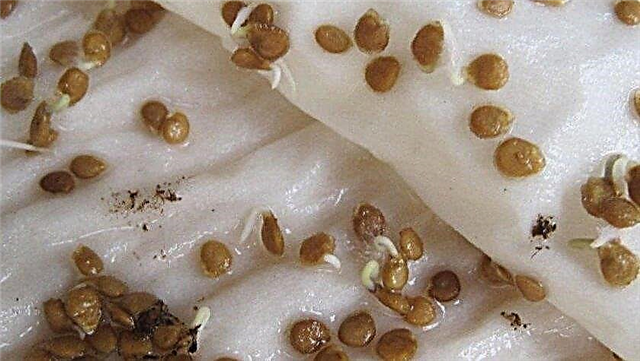
Sowing seeds
In the process of sowing seeds, seedlings are filled with soil mixture 3 cm below the edge. After that, the soil is watered, covered with a film and left for 24 hours - this allows moisture to be evenly distributed throughout the soil.
Immediately before sowing, the ground in the container is leveled, small holes (no more than 1.5 cm) are dug there, where planting material is sown. The container is again closed with a plastic film, which artificially creates the effect of a greenhouse. The optimum air temperature should not fall below + 25 ° C. Immediately after the appearance of the first shoots, the film is removed to prevent rot.
Seedling Care
Usually the first seedlings appear within a week after sowing the seeds. The main factors for the proper development during this period is a sufficient amount of natural light and compliance with the temperature regime - when the first sprouts appear, the temperature drops by 5-6 days to + 15 ° С. After that, the daytime air temperature rises to + 24 ° С, and the night-time temperature rises to + 12 ° С.
When the first sprouts appear, seedlings are necessarily dive. At the same time, for the root system to grow, the main root is not pinched during the procedure.
Developing rapidly, seedlings require a lot of nutrients, so the first top dressing is introduced already on the 10th day after the seedlings are sprouted, and then, after a two-week break, the second. As fertilizers, either ready-made purchased mixtures or mixed independently are used. In the second case, 4 g of urea, 30 g of superphosphate, 10 g of potassium sulfate are taken, which are diluted in 10 l of water. This solution is applied to the soil along with the main watering.
The main factors for the healthy growth and development of plants are soil care (loosening), the presence of sufficient sunlight and moderate watering.
Seedling hardening
The procedure of hardening seedlings plays an important role in the possibility of plant development in adverse climatic and weather conditions.
Hardening usually begins 14–16 days before the expected date of planting seedlings in open ground. When the air temperature warms up to at least + 12 ° С during the day, seedlings begin to be taken out into the open air, starting from half an hour and gradually increasing the time. At the same time, the seedlings are protected for the first time from direct sunlight and drafts. Subsequently, tomato bushes are formed from such seedlings, which can easily tolerate autumn night frosts, when the air temperature can drop to -5 ° С.
Planting seedlings in a permanent place
At the age of 60–65 days, seedlings are ready for planting in a permanent place. Usually this period falls on the end of May or the beginning of June. The size of the occupied area will depend on the method of growing the bush: 3 plants are planted in two stalks per 1 m² of area, 1 plant per plant in 1 stalk.
How to care in the open ground
Tomatoes are unpretentious crops that do not require special care, but are very responsive to minimal care, which immediately affects the quality and quantity of the crop. Adhering to simple recommendations, you can guaranteed to get a large number of sweet and juicy tomatoes.
Watering
When watering tomatoes, you need to adhere to the golden mean, avoiding both drying out the soil and excess moisture. In the absence of rain, tomato bushes are watered once a week, but abundantly. In this case, water should be poured directly under the root of the plant, avoiding the ingress of water on the leaves, which can lead to the appearance of rotten diseases. It is especially important to monitor a sufficient amount of moisture during the ovary period and up to the end of the fruit filling, otherwise you can either lose the crop or get small and unsweetened tomatoes.
Important! Best done watering settled water at room temperature.
Top dressing
To accelerate the growth and development of tomato bushes, it is recommended to carry out a systematic feeding of plants. The ideal fertilizer application is a schedule with fertilizing every 2-3 weeks. But you can do with a minimum amount - only 3 times for the entire season.
You can use any fertilizer (both self-made and ready-made), taking into account the fact that the nitrogen content should be minimal, and the basis should be potassium and phosphorus. Organic fertilizers, such as bird droppings, are also suitable for these purposes.

Shaping and tying bushes
The processes of forming a bush and tying it up are not considered mandatory procedures, but significantly affect both the quality and quantity of the final crop.
Formation is carried out with the help of bush planting; in this case, most often, only one main stem is left. The remaining stepsons that sprout in the bosom of the stem are removed. It is best to carry out stepsoning in the period of prolonged rains, avoiding intense heat, because the plants do not tolerate any trauma in such conditions.
Tomato Nadezhda belongs to medium-sized varieties, but some bushes can reach 1.5 m in length, so the tying procedure is relevant for these plants. In such cases, horizontally stretched wire can be used, but most often stakes are used, which are clogged next to the bush into the ground to a depth of about 40 cm, a distance of about 10 cm from the stem.
Did you know? From a botanical point of view, tomato fruits belong to multi-nested berries.
Soil care
Systematic care is needed not only by the plants themselves, but also by the soil in which they grow. Among the main methods of care are:
- Loosening - thanks to this procedure, the soil on the beds is enriched with oxygen and retains moisture well.

- Hilling - Gives plants stability and causes additional growth of the root system.
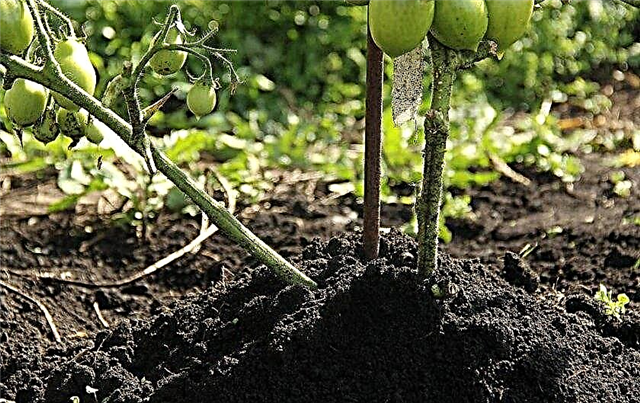
- Weed weed - removal of weed roots, which allows you to save moisture and nutrients in the soil, for the development and growth of tomatoes.
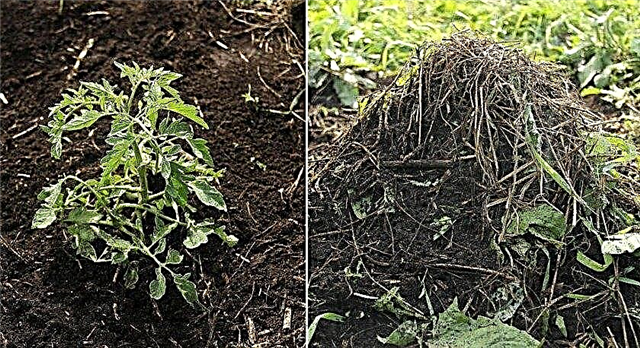
- Mulching - covering the earth around plants with improvised materials (fallen leaves, grass, straw, sawdust, etc.). This procedure allows you to keep warm, prevents the growth of weed grass and retains moisture in the soil.

Harvesting
Variety Nadezhda refers to early ripening varieties, so the first harvest can be expected in 90-100 days. The characteristics of these tomatoes, as well as their taste, make them universal in use - they are perfectly suitable for fresh consumption (salads, juices), as well as for hot dishes and preservation.
The fruits of this variety are favorably distinguished by their high shelf life, as well as the ability to tolerate transportation without loss of presentation. Under conditions of proper storage (in a cool, dark place), they retain their original appearance for up to 3 months.
In general, possessing excellent characteristics and excellent taste, the tomato variety Nadezhda F1 is unpretentious in maintenance and requires minimal maintenance. Thanks to this, this variety is often selected as the main one in the beds of both experienced and novice gardeners. Following simple recommendations, you can soon get a crop of high quality and excellent taste.







